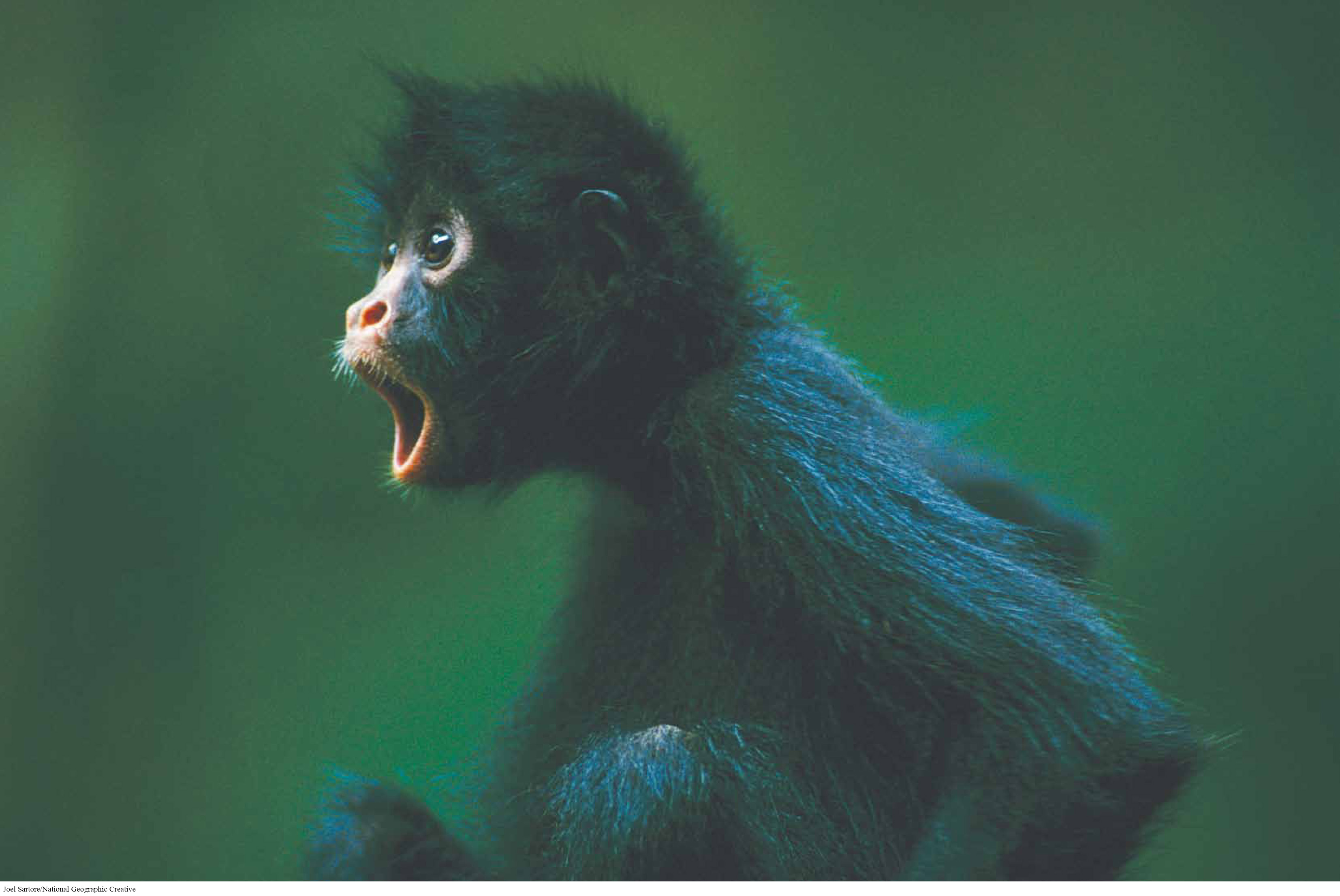Key Terms in Nervous and Motor Systems
actin
action potential
amygdala
autonomic nervous system
axon
Broca’s area
cell body
central nervous system (CNS)
cerebellum
cerebral cortex
chemoreceptor
color-
compound eye
cone
corpus callosum
dendrite
ear canal
eardrum
echolocation
eye cup
forebrain
glial cell
hindbrain
hippocampus
hypothalamus
interneuron
iris
language
left hemisphere
limbic system
long-
long-
mechanoreceptor
medulla
midbrain
motor neuron
myelin sheath
myofibril
myosin
nerve
nervous system
neuron
neurotransmitter
optic nerve
parasympathetic nervous system
peripheral nervous system (PNS)
photoreceptor cell
pons
postsynaptic membrane
presynaptic membrane
reflex
resting potential
retina
right hemisphere
rod
sarcomere
selective serotonin reuptake inhibitors (SSRIs)
sensory integration
sensory neuron
single-
somatic nervous system
sympathetic nervous system
synapse
synaptic cleft
terminal button
thalamus
twitch
vesicle
Wernicke’s area
ABOUT THE CHAPTER OPENING PHOTO

Spider monkeys, such as this blackfaced spider monkey of the Amazon rain forest, get their name from their very long, skinny limbs and tail relative to their torso. They are fruit eaters and spend most of their time in the upper canopy of rain forests.
964